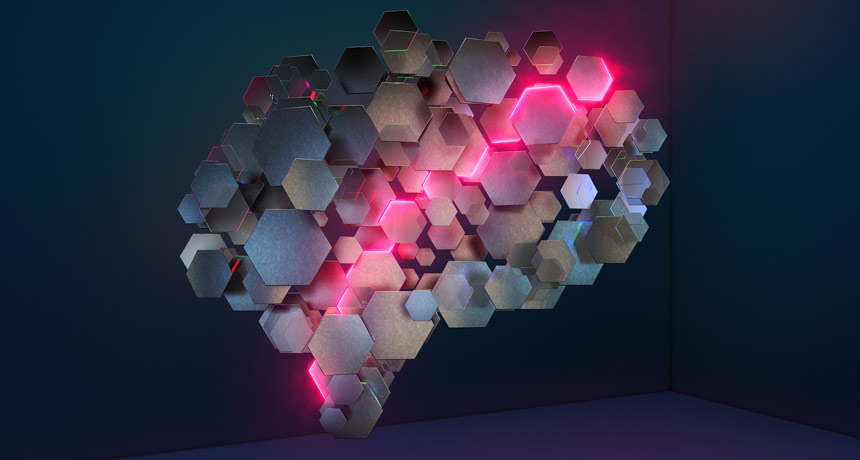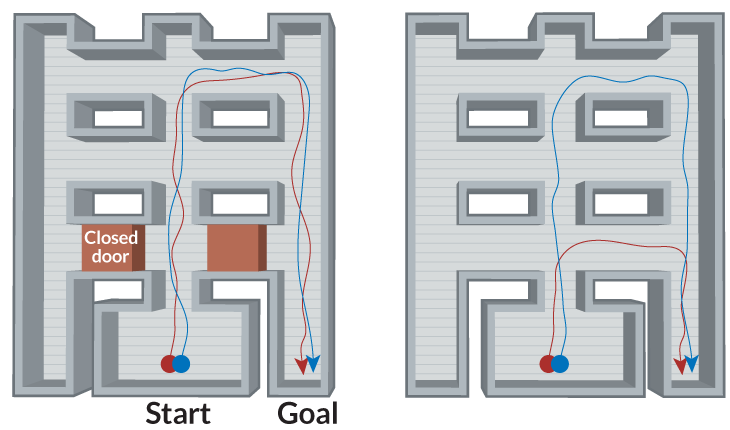This AI uses the same kind of brain wiring as mammals to navigate
The system’s reliance on virtual grid cells could teach us about our own sense of direction

NAVIGATION KNOW-HOW An AI that mentally maps its environment, much like mammals do, could help solve a mystery about the navigational nerve cells in our brains.
DeepMind
- More than 2 years ago
An artificial intelligence that navigates its environment much like mammals do could help solve a mystery about our own internal GPS.
Equipped with virtual versions of specialized brain nerve cells called grid cells, the AI could easily solve and plan new routes through virtual mazes. That performance, described online May 9 in Nature, suggests the grid cells in animal brains play a critical role in path planning.
“This is a big step forward” in understanding our own navigational neural circuitry, says Ingmar Kanitscheider, a computational neuroscientist at the University of Texas at Austin not involved in the work.
The discovery that rats track their location with the help of grid cells, which project an imaginary hexagonal lattice onto an animal’s surroundings, earned a Norwegian research team the 2014 Nobel Prize in physiology or medicine (SN Online: 10/6/14). Neuroscientists suspected these cells, which have also been found in humans, might help not only give mammals an internal coordinate system, but also plan direct paths between points (SN Online: 8/5/13).
To test that idea, neuroscientist Caswell Barry at University College London, along with colleagues at Google DeepMind, created an AI that contained virtual nerve cells, or neurons, whose activity resembled that of real grid cells. The researchers trained this AI to navigate virtual mazes by giving the system reward signals when it reached its destination.
Adaptable AI
An AI equipped with navigational nerve cells called grid cells (path shown in red) and an AI without grid cells (blue) learned to maneuver through a virtual maze without shortcuts (left). When open doorways appeared in the maze, only the grid cell–endowed AI knew to take the shortcut.

The AI bested a human expert player at solving the virtual mazes, and proved savvier than other artificial neural networks in maneuvering through labyrinths larger than those traversed during its training. When a door opened to provide a shortcut through the maze, the new AI took the more direct route. By contrast, AI systems without artificial grid cells ignored the open door and took the long way around.
These findings support the idea that grid cells do more than help mammals orient themselves in time and space (SN Online: 11/4/15); they also help animals devise the most straightforward directions to destinations. AI also appears to be “a very powerful tool” for testing other neuroscience theories, Barry says. He and his colleagues suggest that virtual experiments on artificial neural networks that imitate different regions of the brain may eventually replace some animal testing.
But there are limitations to using AI to study the brain. Because the system is meant to learn on its own, researchers can’t tell why the system made a specific decision, says neuroscientist Francesco Savelli at Johns Hopkins University, whose commentary also appears online May 9 in Nature. The virtual grid cells clearly helped the AI navigate more efficiently, he says, but it’s still unclear precisely how the AI used those cells.




